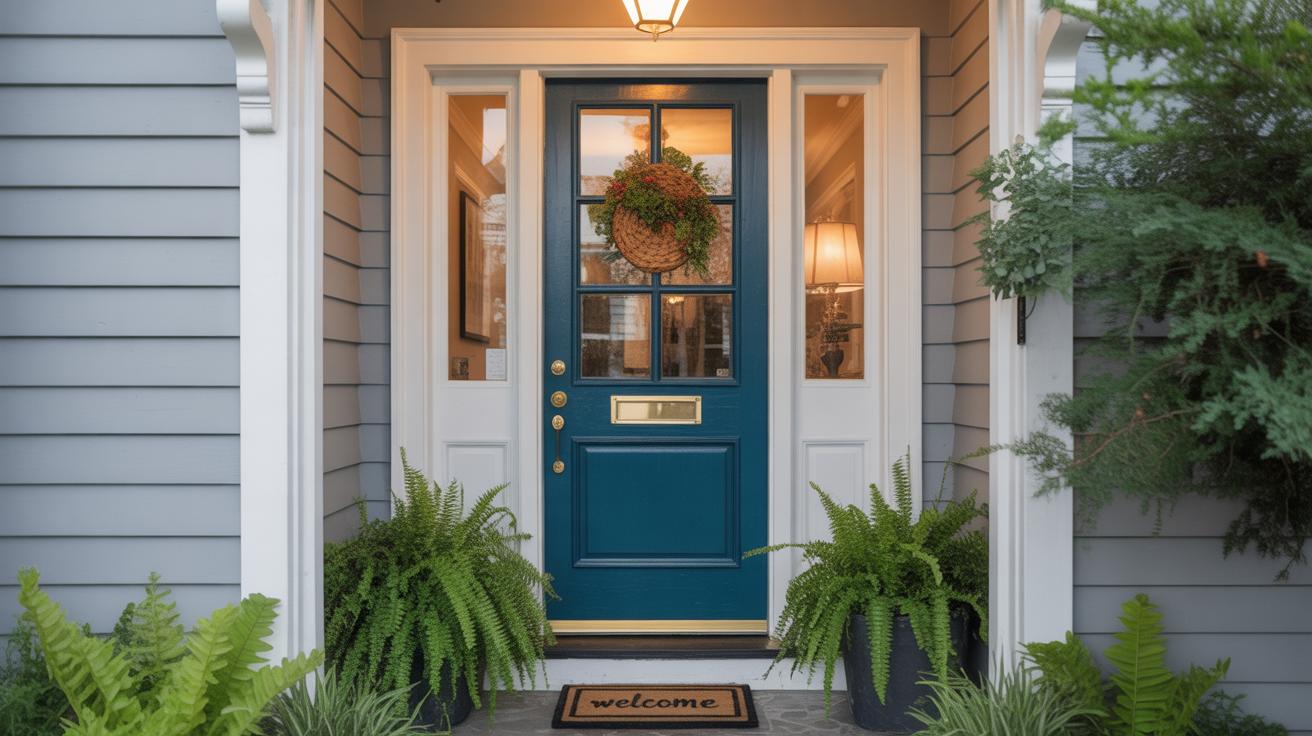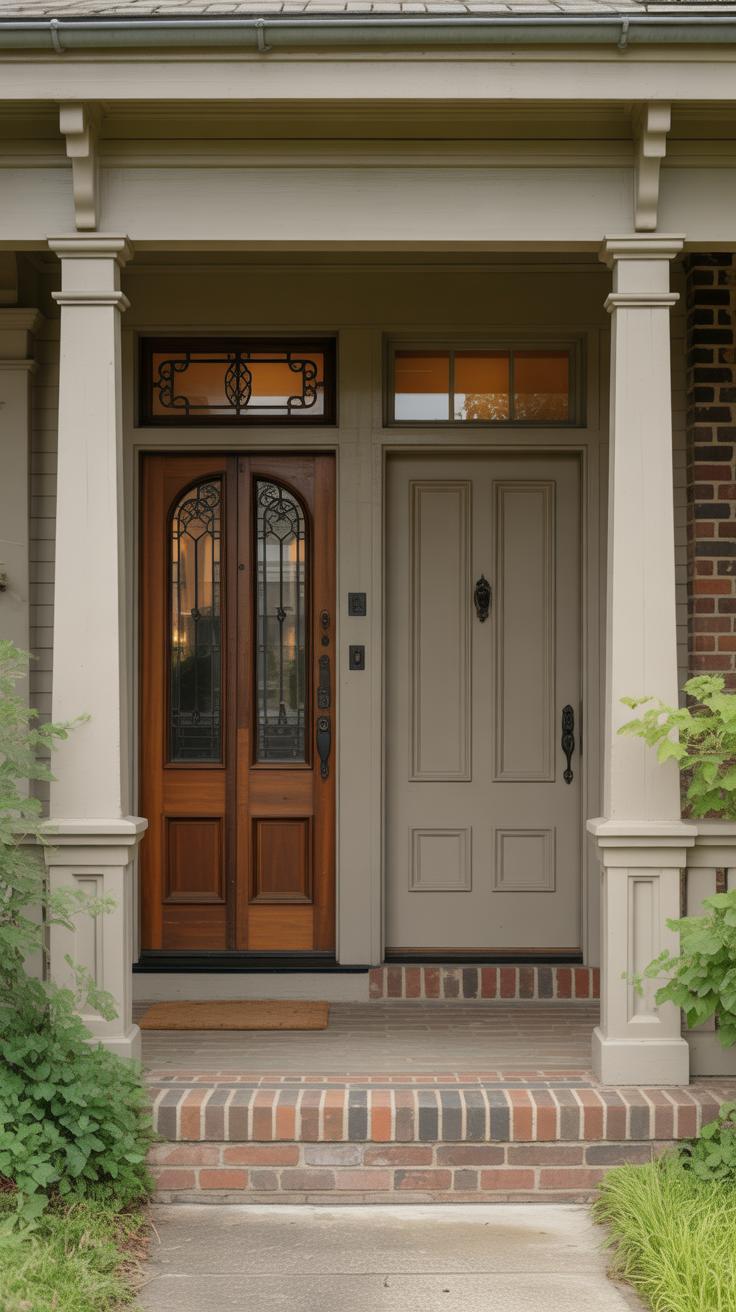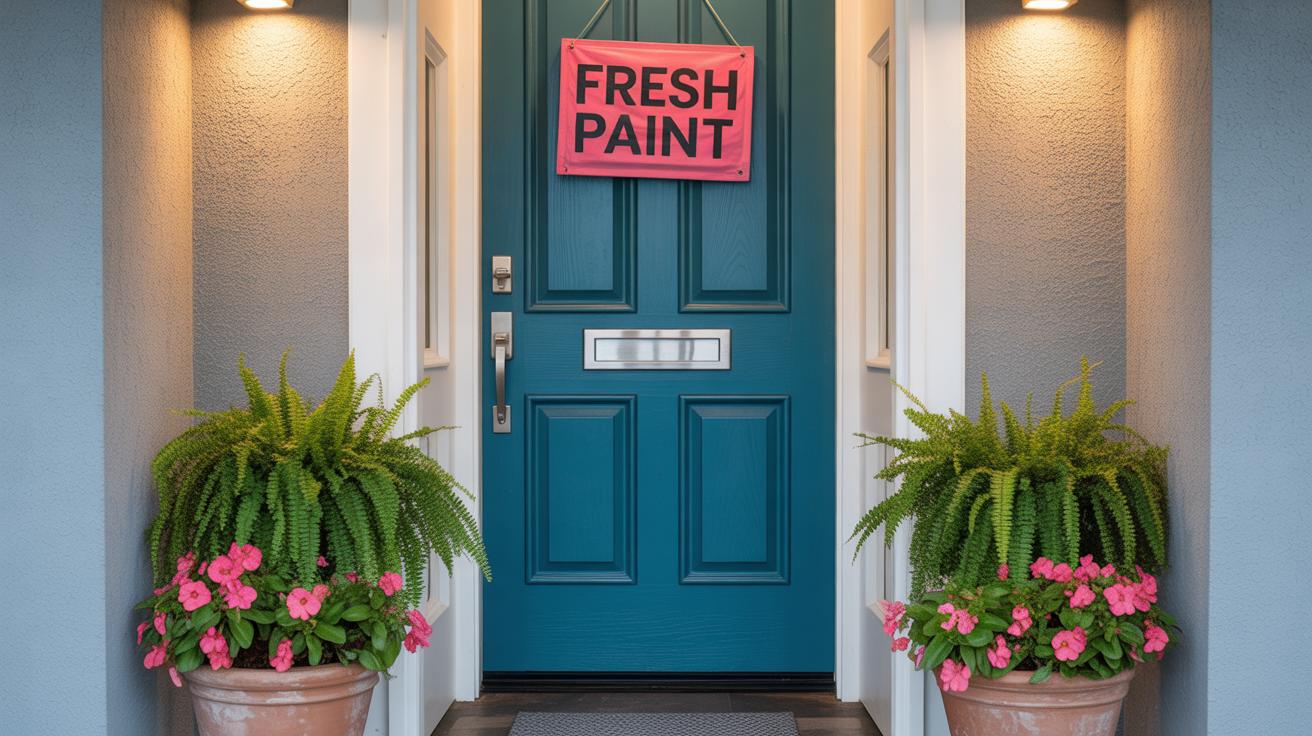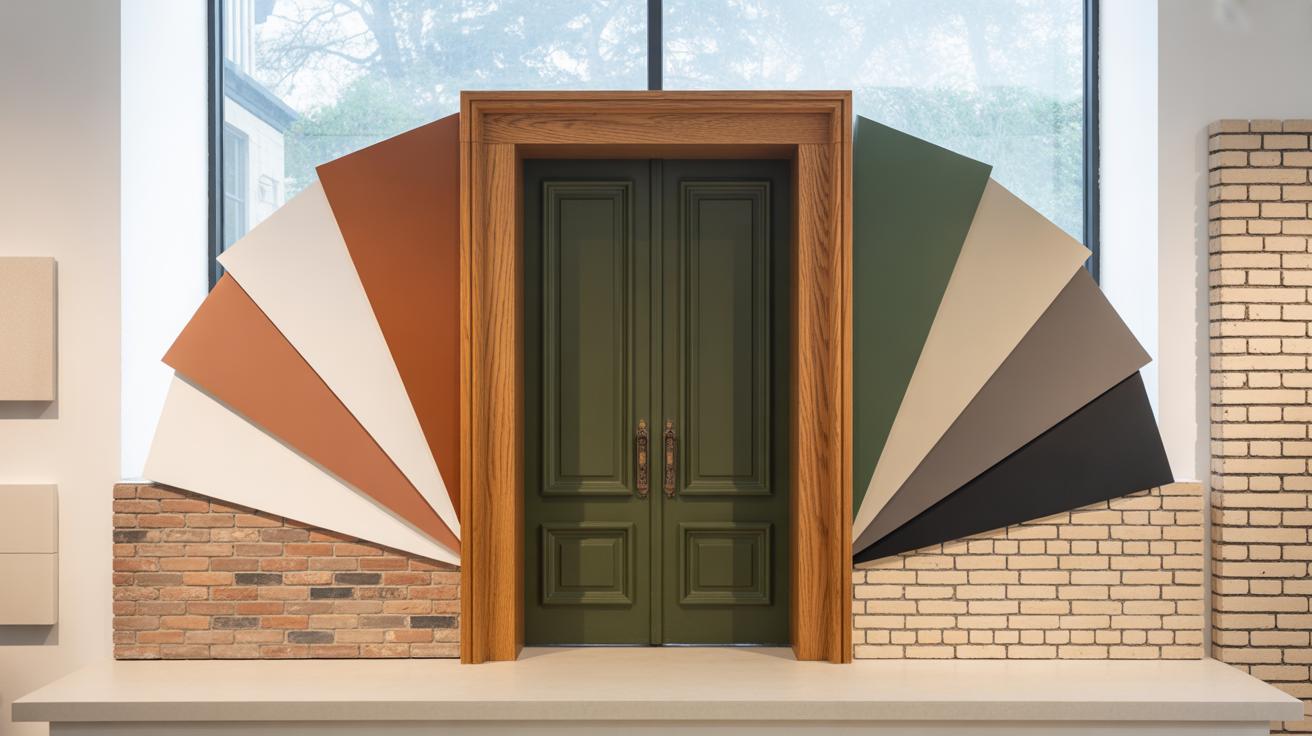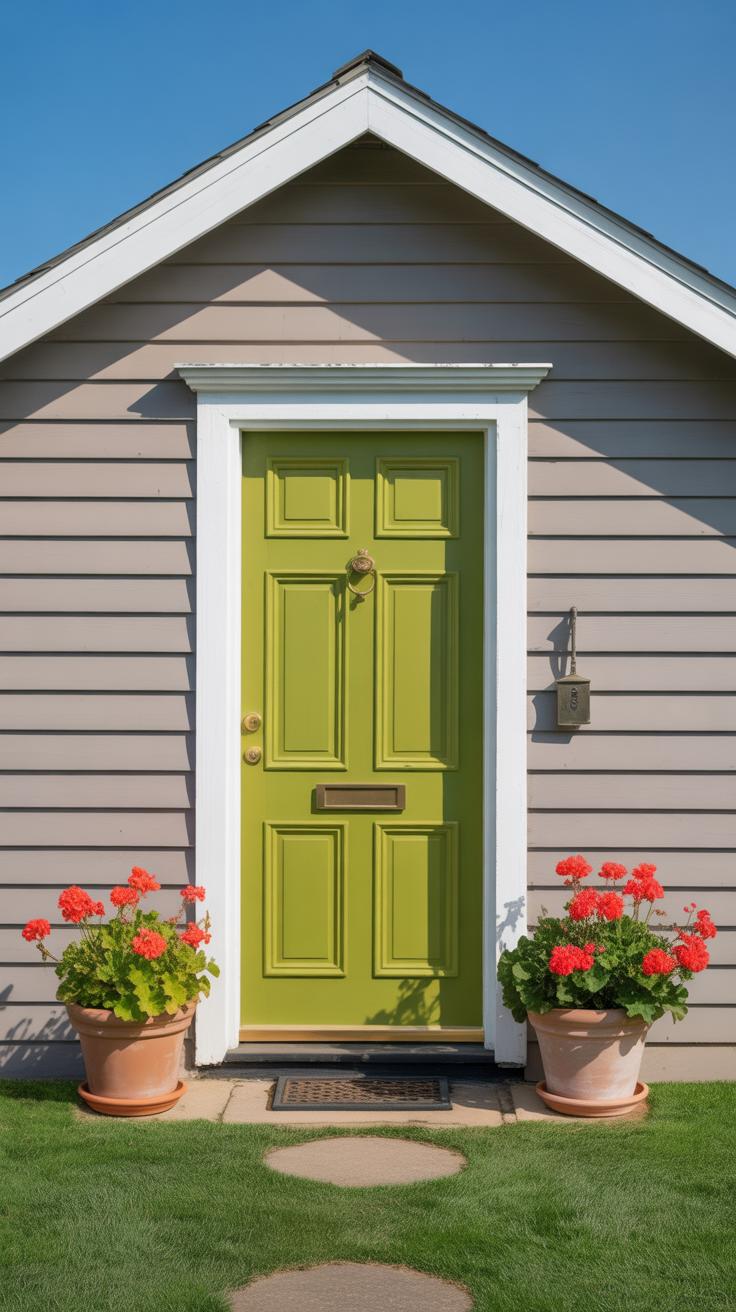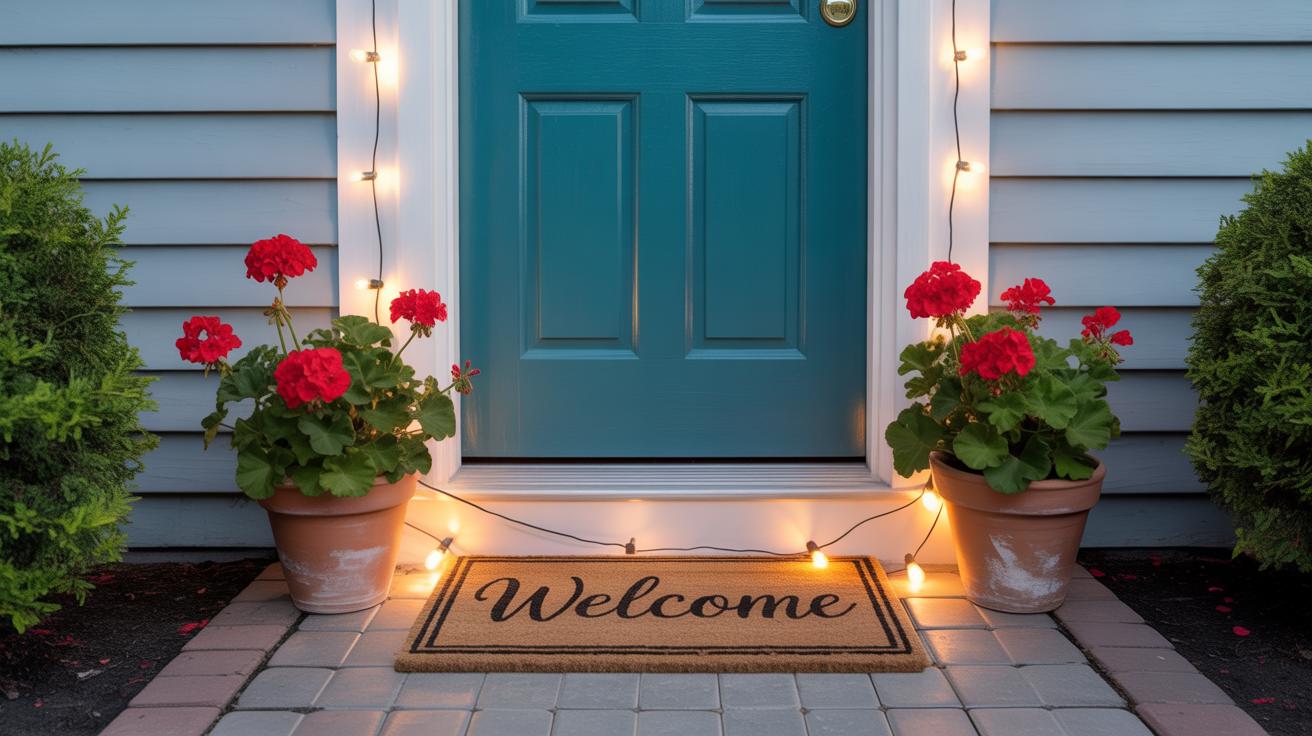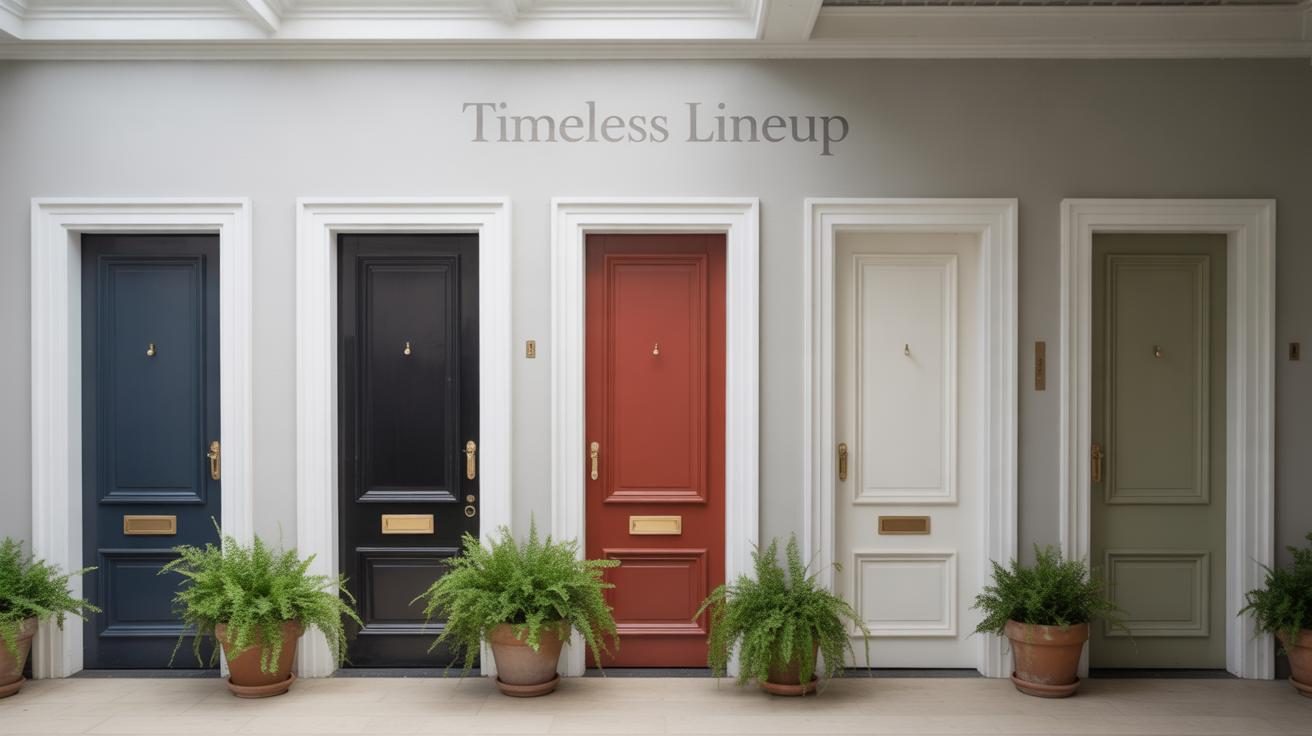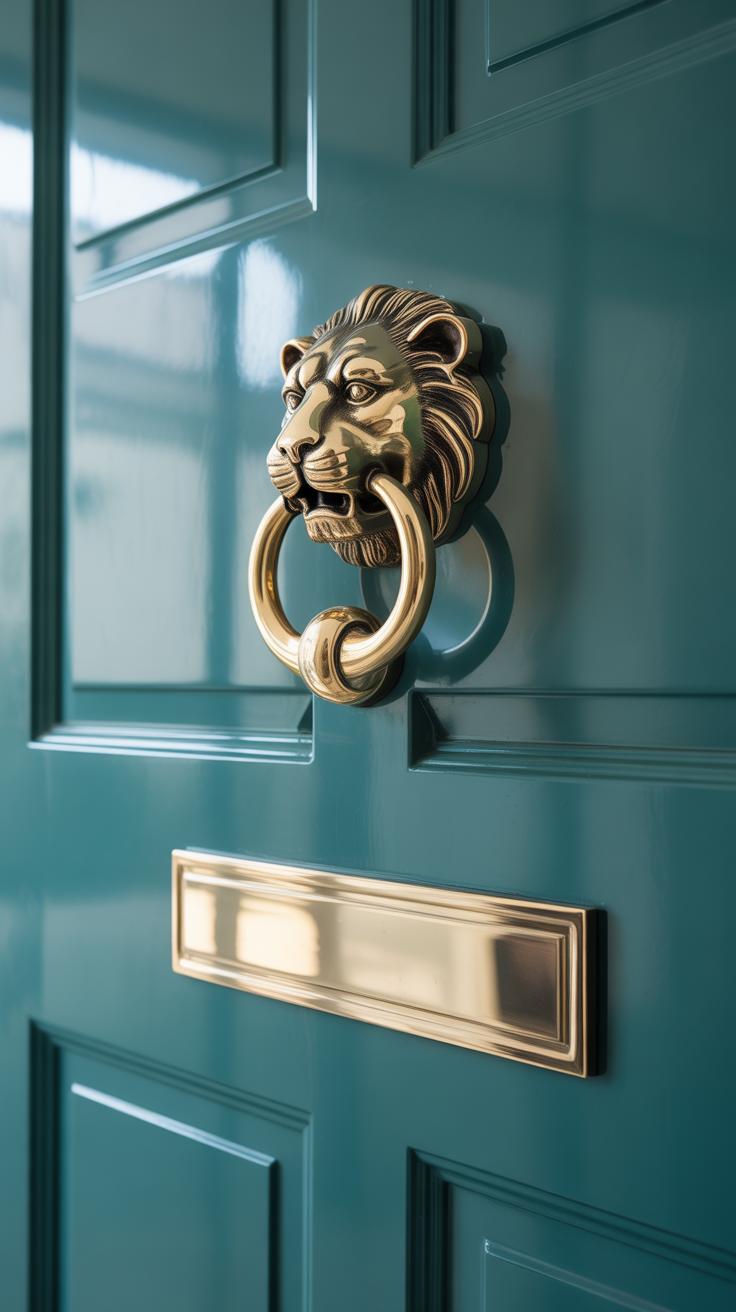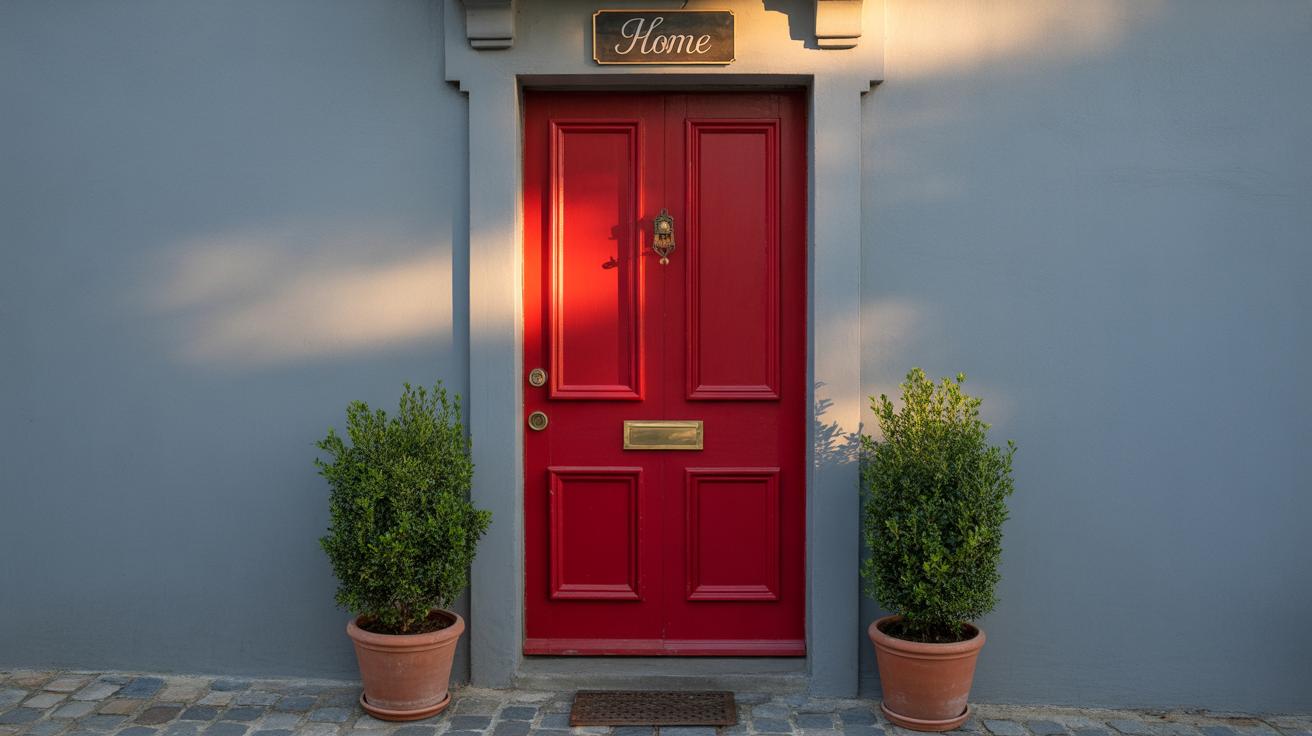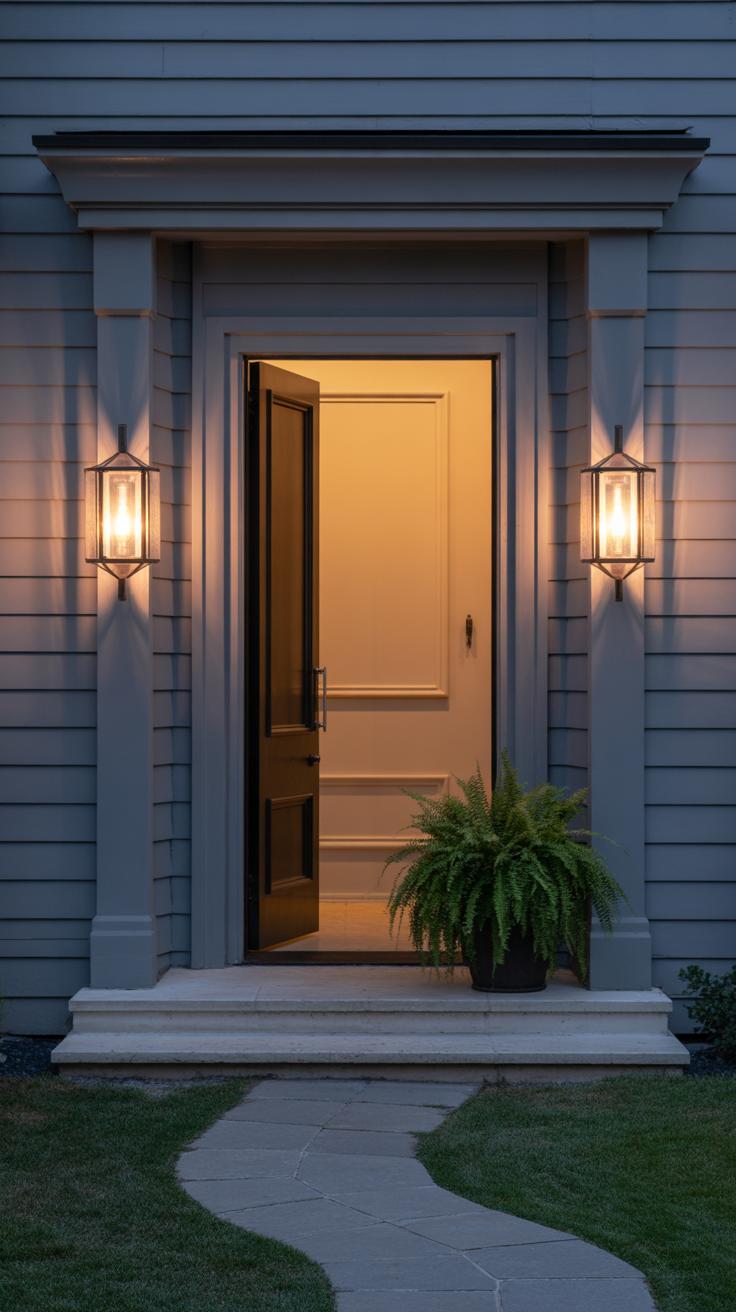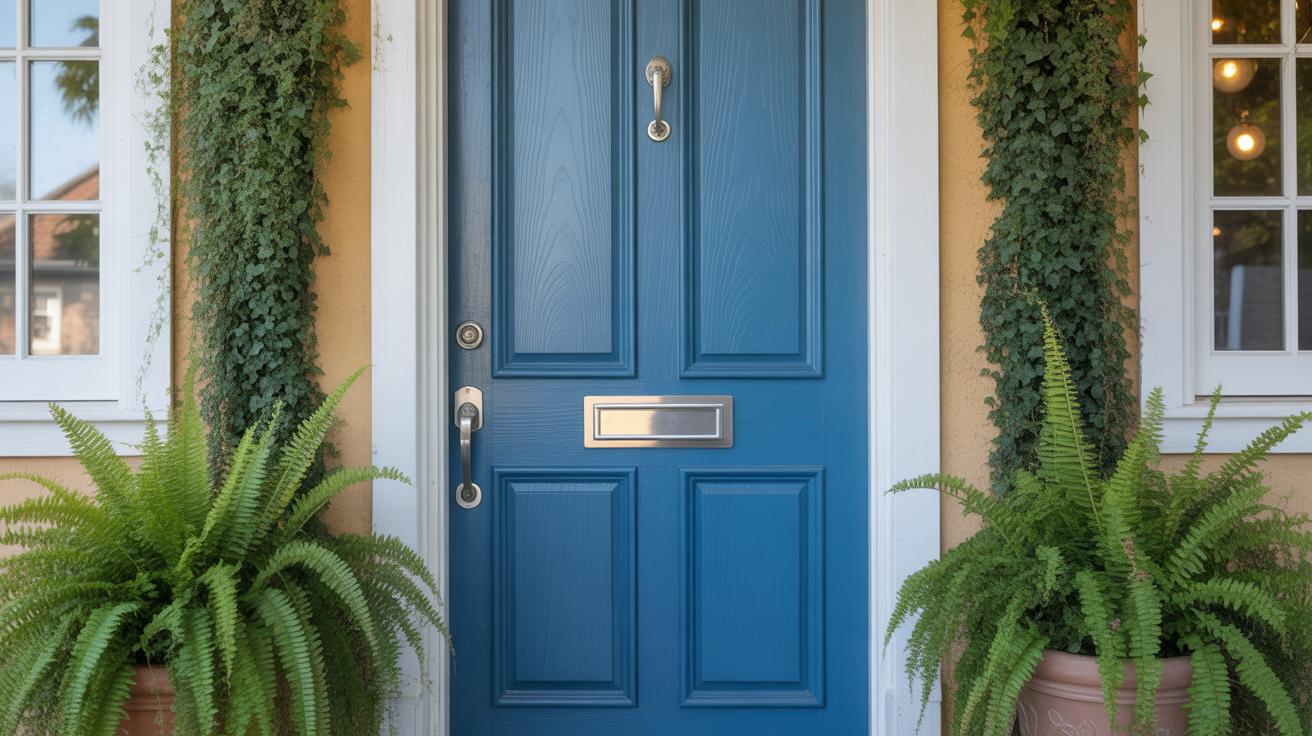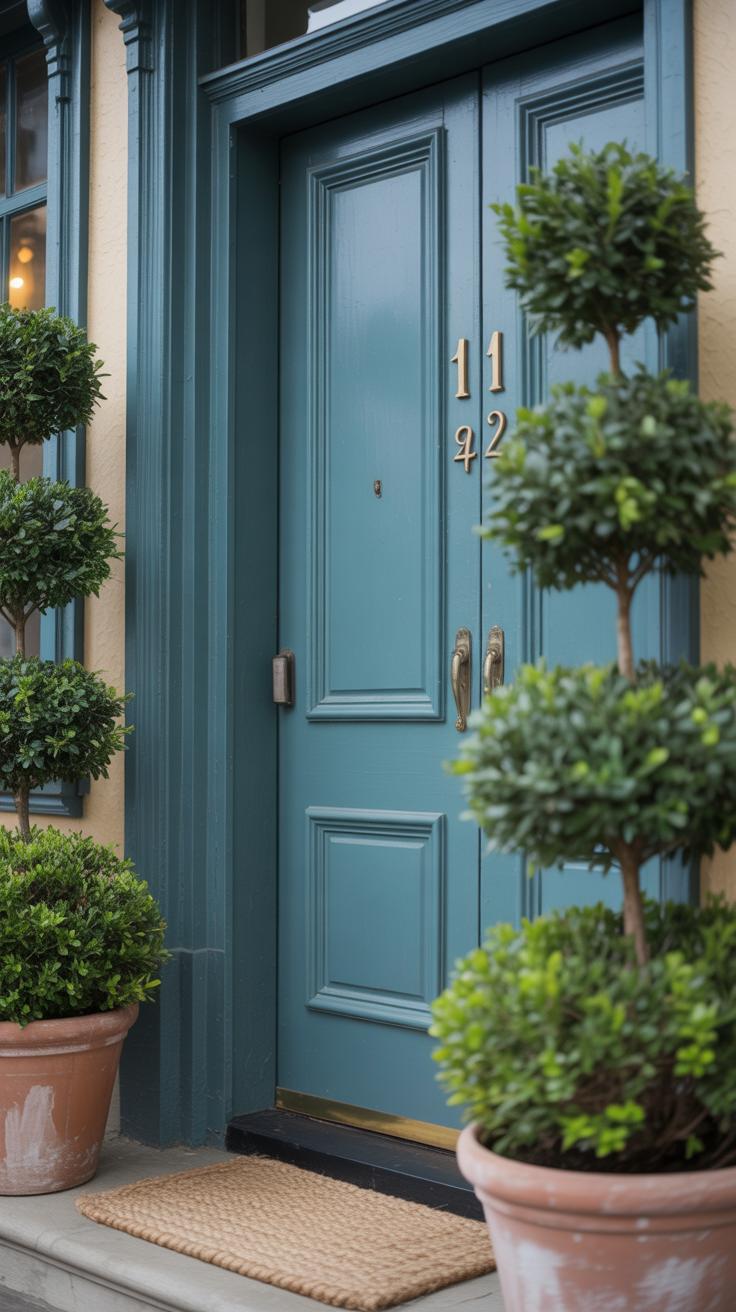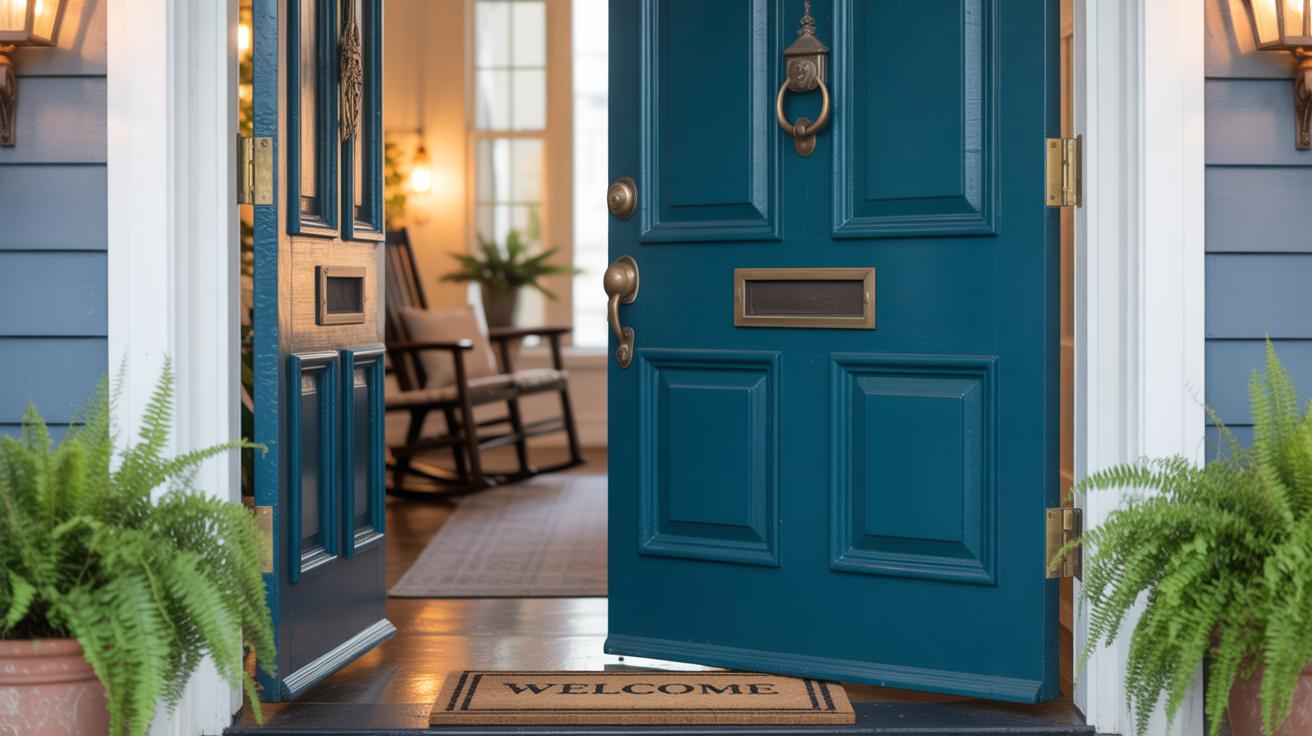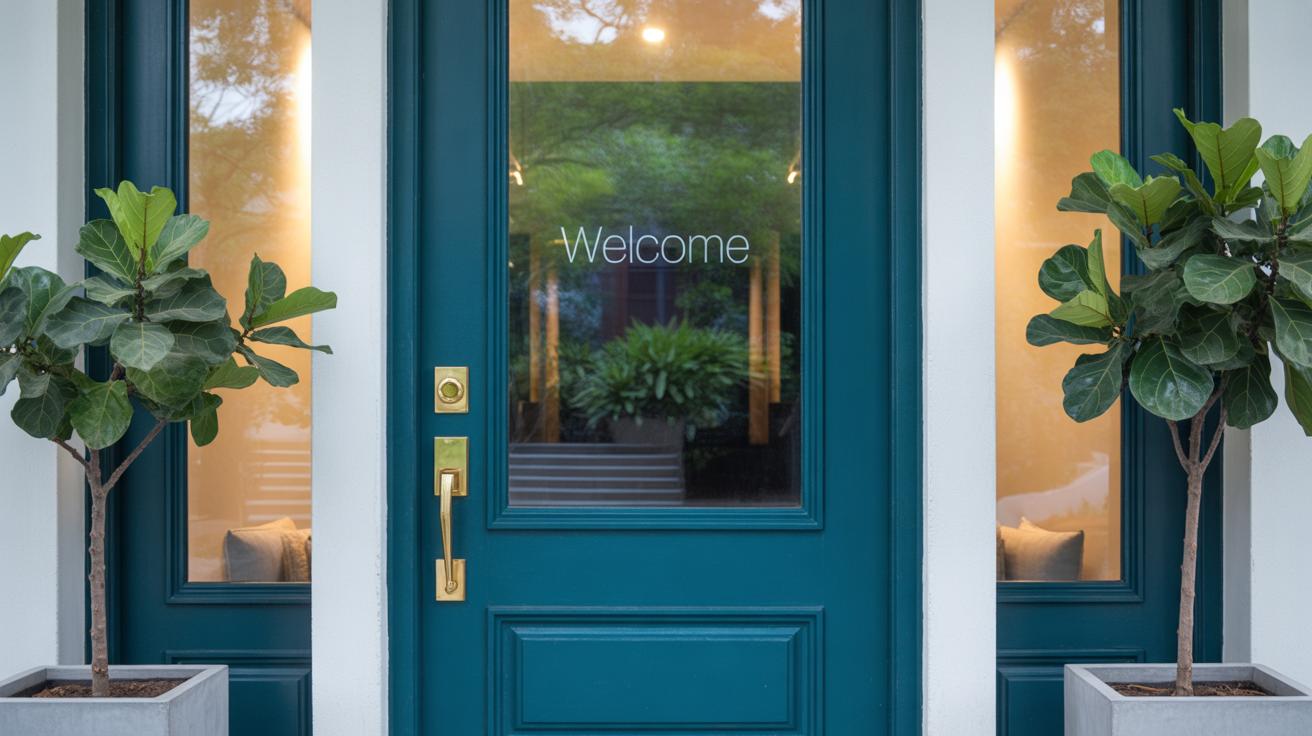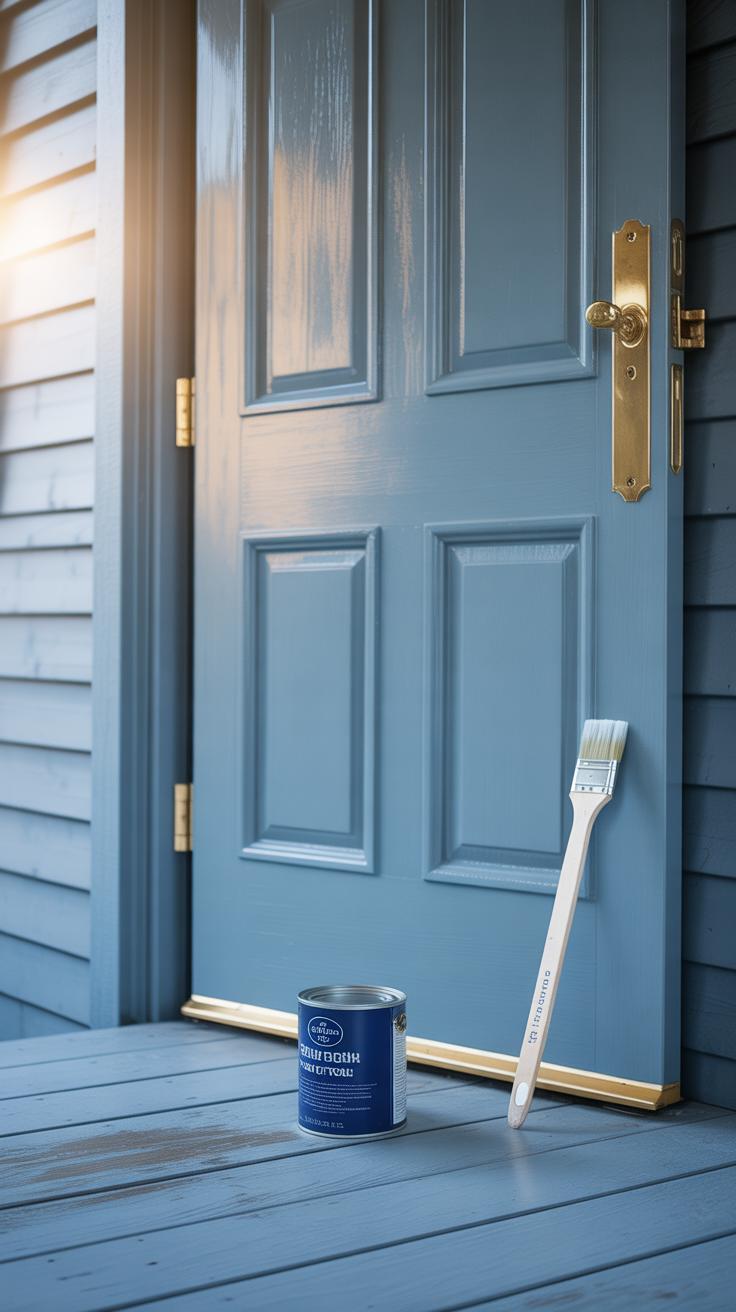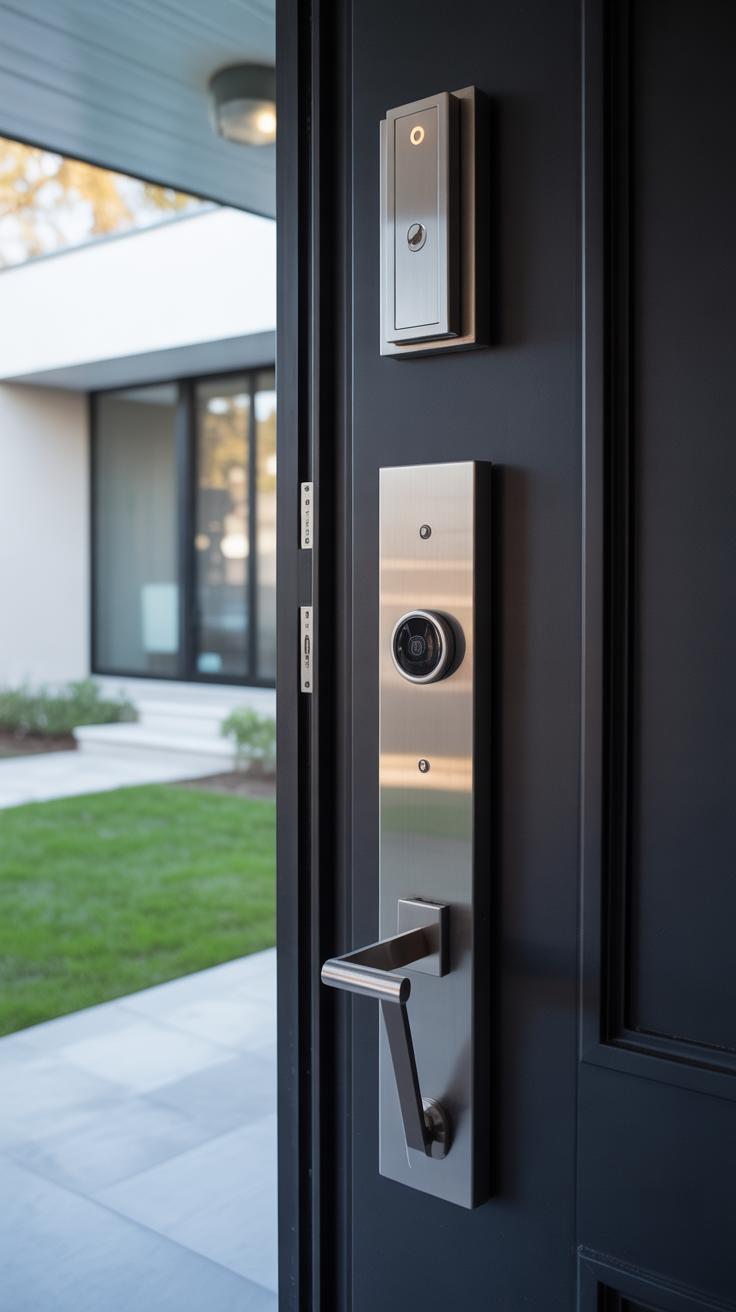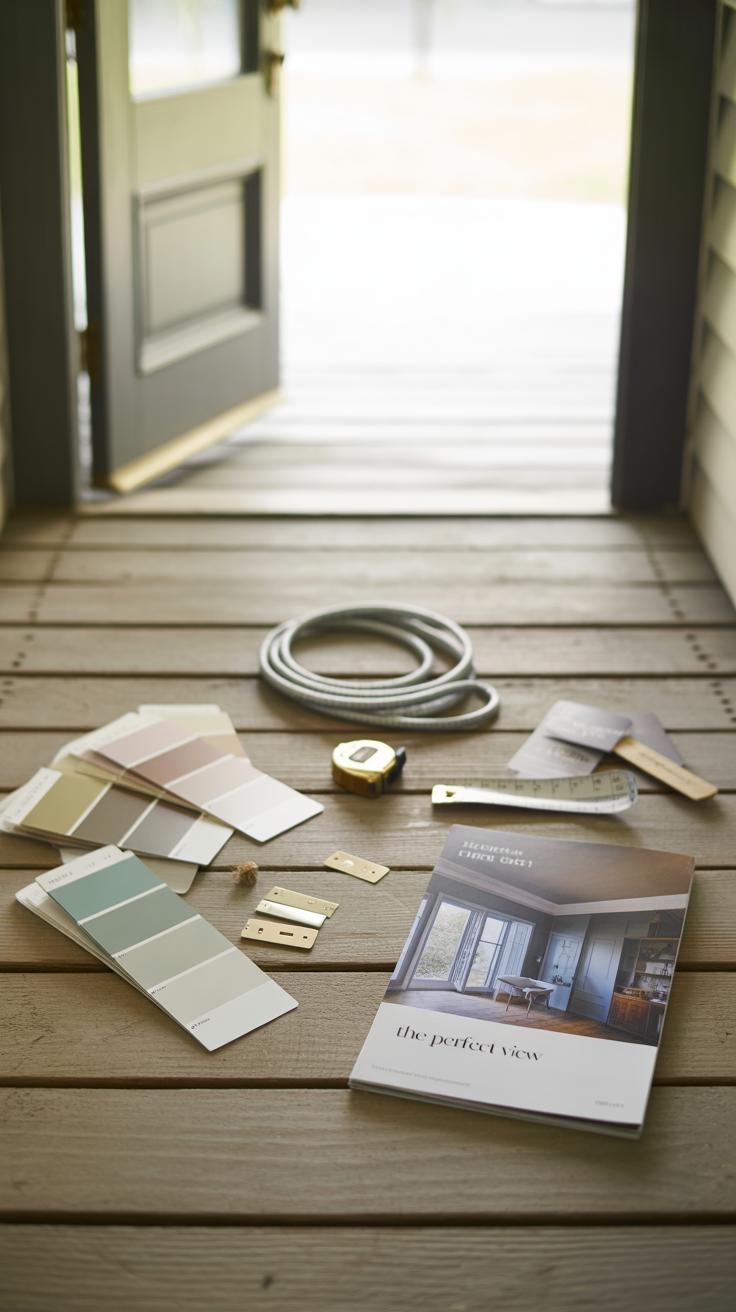Introduction
Your front door is the first thing people see when they look at your home. It sets the tone for your house and can make a big difference in curb appeal. Making smart choices about your front door can make your home look more welcoming and valuable quickly.
In this article, we will explore easy and effective front door ideas that can quickly boost your home’s curb appeal. From door styles to decoration tips, you will find practical suggestions you can use right away.
Selecting a Front Door Style That Fits Your Home
When it comes to choosing a front door style, there’s more than just picking the one that looks nice. The door should feel like it belongs to your home, but that feeling isn’t always easy to pin down. You might want something modern but also warm, or classic but not boring. It’s a bit of a balancing act.
Consider these points as you explore your options:
- Architectural Style: A Craftsman home might call for a wood door with glass panes, while a contemporary house may look better with a sleek metal or fiberglass door. Matching the general vibe helps everything feel cohesive.
- Material Choices: Wood, steel, fiberglass—all have different looks and maintenance needs. Wood feels traditional and welcoming but needs care. Steel is strong and low-maintenance but can seem cold if overused.
- Color and Finish: Sometimes a bold color can make your door stand out, but it should still complement the rest of the exterior. A matte finish versus glossy can also change the door’s character drastically.
- Details and Accents: Glass inserts, sidelights, trims, and hardware add personality. A decorative grille or a simple door handle can completely change how inviting the entrance feels.
Picking a door style isn’t just about looks, really. Think about how the door will feel every time you come home. What kind of welcome do you want it to give? This personal touch can turn a basic change into something that really makes your house feel like a home.
Popular Front Door Styles
Modern doors often feature clean lines, minimal detailing, and sometimes glass panels that add light while keeping things sleek. I find they suit contemporary homes but can feel out of place on older builds.
Craftsman doors lean into handcrafted charm. They usually combine wood, divided glass panes, and simple yet solid designs. They bring warmth and a sense of tradition, perfect if your house has a bungalow or cottage feel.
Rustic doors are rougher around the edges, sometimes with reclaimed wood or iron accents. They convey ruggedness and can add character, though they might clash with streamlined or polished homes.
Classic styles usually mean paneling and symmetry, timeless and familiar. If your home is traditional, perhaps colonial or Georgian, these doors fit naturally without drawing unnecessary attention.
Matching Door Style to Your Home
Start by looking at your house’s architecture. A modern door can jar if your home is Victorian or ranch-style, making you question your choices later.
Think about personality too. Do you want the door to stand out or blend in? Sometimes an unexpected door style works—like a craftsman door on a modern house—but it takes a bold eye and maybe a bit of trial and error.
Also, don’t ignore the scale and proportion—a massive rustic door might overwhelm a tiny facade, while a delicate paneled door could disappear on a large house.
Ultimately, trust your instincts. Try to visualize how the door would feel each day you come home. That feeling might guide you more than any style guide.
Using Color to Make Your Front Door Pop
Choosing the right color for your front door can instantly change how your home looks from the street. It’s one of those changes that feels small but surprises you with a big impact. A well-chosen color grabs attention, adds personality, and even sets a welcoming mood before anyone steps inside.
Color Choices and Meanings
Colors send subtle signals. Red can feel bold and lively, but some might see it as too aggressive. Blue often brings calmness and trust but might blend into cooler-toned homes. Yellow, cheerful and bright, can energize the space, though it risks clashing with earthier exteriors.
Here’s a quick guide to tones you might consider:
- Black: Classic, elegant, and can make details stand out.
- Green: Refreshing and earthy, suits natural surroundings.
- Orange: Warm and inviting, but bold and less common.
- White: Clean and simple but can feel plain if overdone.
Remember, think about your neighborhood vibe too. A bright purple might be fun for your taste but feel out of sync on a row of traditional homes. How you want to express yourself matters, but there’s some comfort in blending just enough to feel right.
Tips for Painting Your Front Door
Before picking up a brush, a little prep goes a long way. Clean the door thoroughly—dirt and old paint chips can ruin the smoothness. Light sanding helps the paint grip better, avoiding that frustrating peeling down the line.
Use painter’s tape around edges to keep lines crisp. Opt for a high-quality exterior paint with a semi-gloss or gloss finish. It resists weather better and is easier to wipe clean.
Apply two thin coats instead of one thick one. It might feel like more work, but the difference in durability and appearance definitely shows. If you have a cranky old door or complex detailing, a small angled brush can help you reach tricky spots without drips.
Painting your front door might seem like a minor fix, but done right, it refreshes your home’s face in a way that feels welcoming and fresh—something you’ll probably enjoy every time you come home.
Adding Hardware and Fixtures That Impress
Switching out your front door hardware can freshen up the whole look almost instantly. Think beyond the standard handle—door knockers, house numbers, and even mail slots all play a part in shaping a strong first impression. You might find that a bold, oversized knocker or sleek, minimalist numbers totally change the style vibe.
Choosing Stylish Hardware
Metal choices matter more than you’d guess. Brass gives warmth and tradition. Satin nickel feels clean and modern. Black iron can make a door look grounded and solid—or even trendy if you’re careful. Some people lean toward antique finishes, which add character but might not suit every home.
Design-wise, round handles soften a door’s edges, while angular shapes add sharpness. Even the shape of your house numbers—their font and alignment—affect curb appeal. Sometimes simple is best, but bold hardware can make a modest door stand out. It’s a bit of a balancing act, honestly.
Installing Hardware for Best Effect
Placement isn’t just practical; it’s part of the style game. Handles should feel natural to the user but also catch the eye. House numbers usually go at eye level, but depending on the door size, slightly higher or lower might look better. Try holding the hardware up before screwing it in—that visual test helps.
Don’t overlook small details like spacing between pieces or how a knocker’s shadow plays on the door’s surface. Sometimes, moving a piece an inch or two makes all the difference, though that’s easy to miss if you rush. If you’re uncertain, mark spots with painter’s tape first—seeing it over time can help you decide.
In my experience, upgrading hardware feels like an easy fix that packs surprising punch. It’s less work than repainting but can dramatically boost your home’s welcoming look. Maybe it’s time to rethink those tired handles and numbers hanging on your door?
Creating Inviting Entryways with Lighting
Adding lighting around your front door does more than just brighten the way—it can actually make your home feel more welcoming and safer, too. I’ve noticed that a well-lit entrance invites you in, even on the darkest nights. The right lighting highlights the beauty of your door and its details, like textures or colors you might overlook during the day.
But beyond looks, there’s a practical side. Proper lighting can deter unwanted visitors and help guests find their keys without fumbling in the dark. It gives a subtle but important sense of security. Maybe you’ve walked up to a house and hesitated before noticing a bright porch light guiding you in—that little glow can change everything.
Types of Lighting for Front Doors
You’ve got some good options when thinking about lights for your entryway. Each one can create a different mood or function.
- Sconces: Mounted on either side of the door, these can frame your entrance and add symmetry, or a little asymmetry if you prefer to mix styles.
- Overhead Lights: Mounted above the door, they cast light downward, illuminating the porch and creating a clear, inviting spot.
- Pathway Lights: Not directly on the door, but leading up to it. They guide visitors along sidewalks or steps, making access easier and safer.
Personally, sconces around my door made a big difference—my home felt more “put together” at night, but I still mix in some soft pathway lighting for a cozy approach.
Placement Tips for Lighting
Where you put your lights really matters—poor placement can leave dark spots or glare that’s just annoying. Placing lights at eye level, like wall sconces beside the door, works well to illuminate faces and lock areas. Overhead lights need to be bright enough to cover the whole porch but not so harsh they wash out your door’s color.
Pathway lights should be spaced evenly, about 5 to 8 feet apart depending on your walkway’s length, so no steps or cracks hide in shadows. Think about the shadows your lighting casts, too—sometimes indirect light, bouncing off nearby walls, can create a softer and more attractive glow.
Does your front door get lost in the evening? Maybe experiment with a mix of these lights. Lighting can be subtle or bold; both can work. The key is making your entryway visible and welcoming without feeling like a spotlight.
Incorporating Decorative Elements Around the Door
You might have noticed how simple touches around your front door can make a surprisingly big difference. Think about wreaths—these aren’t just for holidays anymore. A fresh green wreath can feel welcoming all year, while a more artful one with dried flowers or wooden accents can add character without trying too hard.
Plants are another easy way to boost charm. Placing symmetrical potted plants, like boxwoods or ferns, flanking the door creates a natural frame. But don’t feel locked into symmetry; a single tall plant paired with a smaller grouping off to one side might feel a bit more relaxed—and that’s okay.
Doormats serve both function and style. A simple welcome mat works, but something patterned or with a pop of color can signal your style before anyone even steps inside. Seasonal decorations, when swapped in and out, keep things fresh. Pumpkins in fall, lanterns in winter, or bright flowers in summer—the changes can be subtle but they add up.
Choosing Decorations that Fit Your Style
What kind of vibe does your home give off? A rustic farmhouse might lean toward burlap or wooden wreaths, iron lanterns, and woven doormats. A modern style? Think sleek lines, monochrome colors, and minimal decoration—maybe a bold, graphic doormat and a simple geometric planter.
If your style feels more traditional, you could opt for classic topiaries, floral wreaths, or a brass welcome sign. For those who like eclectic touches, mixing and matching textures and colors around the door keeps things interesting. You can’t really go wrong when you choose pieces that feel “you.”
Seasonal and Year-Round Options
Rotating decorations can give your entryway a sort of gentle rhythm through the year. But it’s not about overhauling completely every season. Sometimes just swapping out a wreath or changing the plants can keep the space feeling lively without too much effort.
Year-round options include evergreen wreaths, hardy plants like succulents or boxwoods, and neutral doormats that work anytime. Then add little seasonal accents—maybe a pinecone garland for winter or a citrus-scented wreath in spring. This keeps your door from feeling stale and boring, and it invites a subtle sense of anticipation.
Have you ever thought about how your front door decorations make a statement about who you are? It’s worth experimenting, trusting your instincts even if that means trying something, then changing it again until it just feels right. In the end, your front door will show your style without saying a word.
Maintaining Your Front Door for Lasting Appeal
Cleaning and Upkeep
Keeping your front door looking fresh is often simpler than you might think. The cleaning method really depends on the door’s material. For wooden doors, a gentle cleaner and a soft cloth usually do the trick—avoid harsh chemicals that can strip the finish. A bit of warm soapy water, wiped down weekly, tends to be enough. Metal doors like steel or aluminum respond well to mild detergent and water too, but watch for areas where paint may chip or rust could start.
Glass inserts need special care—use a glass cleaner and microfiber cloth to dodge streaks. Vinyl doors just need a rinse with water and mild soap; they’re generally low maintenance but might collect grime around seams, so a soft brush can help there. You might find yourself wondering if that extra cleaning step really matters. Well, over time, these small habits keep your door from looking tired or weather-beaten.
Repairing Wear and Damage
Scratches, dents, or fading can make any door lose its charm fast. For wood doors, minor scratches can often be masked with a matching wood stain marker or furniture touch-up crayon—sometimes an easy fix you don’t even realize. Dents in metal doors might seem tricky, but a little filler and a fresh coat of paint can restore the surface nicely.
If the paint is fading or peeling, sanding down the affected areas and repainting is usually worth the effort. You might ask yourself if it’s better just to replace the door at that point. It depends on the damage and your patience for DIY; that said, small repairs usually stretch the lifespan of your door dramatically. Oh, and don’t forget to check the weatherstripping—it’s easy to overlook but crucial for keeping the door tight and looking sharp.
Using Technology to Enhance Front Door Features
Smart doorbells, locks, and security systems have become more accessible, making it easier for homeowners to add convenience and improve their entryways. A smart doorbell lets you see and speak to visitors from your phone, even when you’re not home. It’s not just about convenience—this kind of device adds an extra layer of awareness that traditional doorbells simply don’t offer.
Smart locks offer more than just keyless entry. You can grant temporary access to guests or service providers without handing over a physical key. That’s especially handy if you occasionally forget where you put your keys or if you’re expecting deliveries. Some locks even track who enters and when, which might feel a bit intrusive to some, yet a relief to others.
Security systems tied to your front door can alert you to unusual activity immediately. Cameras with motion sensors combined with smart lighting can deter unwanted visitors. I once installed a smart floodlight paired with a camera, and it completely changed how safe I felt coming home late at night. Perhaps this combination isn’t for every home, but it’s worth considering if safety is a priority.
Benefits of Smart Front Door Devices
Safety is a clear gain. For example, you don’t have to open the door to strangers—seeing and speaking to them remotely is a strong advantage. These devices can also reduce the risk of lost or stolen keys, which often leads to costly lock replacements. Convenience is another big plus, especially for busy families or those with frequent visitors.
Of course, technology sometimes adds complexity. If your Wi-Fi is spotty or the app glitches, you might lose some functionality just when you need it most. Still, most people find that the benefits outweigh the occasional hiccups.
Choosing and Installing Devices
Start with defining your needs. Ask yourself: Do you want remote access? Video capability? Integration with other smart home gadgets? This will help narrow down your options. When selecting devices, look for compatibility with your phone’s operating system and any existing home tech.
Installation can range from very simple to more involved. Many smart doorbells are designed for DIY setup, attaching where your old doorbell was. Smart locks might require more effort, sometimes even professional help, depending on your door’s make and model. In my experience, reading user reviews and watching installation videos beforehand eases the process and helps avoid surprises.
Don’t forget to test everything thoroughly once installed. Make sure notifications work, locks respond promptly, and cameras cover the angles you want. Small adjustments often improve the overall experience.
Planning Your Front Door Upgrade Budget
Figuring out how much to spend on your front door makeover can feel tricky—there’s a lot to weigh. You want value, sure, but it’s easy to get caught up in details or miss hidden costs. So, here’s what I’ve noticed matters most when you start planning.
Cost Factors to Consider
First, think about the door itself. A full replacement will usually cost more than a fresh coat of paint, but materials vary widely. Wood doors tend to run pricier, fiberglass or steel might be cheaper but could lack that warmth. Then there’s the hardware—locks, handles, hinges. You might assume those are minor expenses, but fancy or smart hardware adds up quickly. Don’t forget decor elements like lighting fixtures or welcome mats; small touches often carry a surprising price tag.
Also, installation isn’t free. If you’re not handy, you’ll need to factor in labor costs, which vary based on your location and the job’s complexity. Even painting or staining can become a project if you want it done well.
Affordable Upgrade Ideas
You don’t need to empty your wallet for a noticeable change. Sometimes, swapping out your doorknob, adding a stylish wreath, or even just repainting the door in a bold color can lift your curb appeal a lot. Hardware upgrades can be budget-friendly if you shop around; sometimes you find great deals on durable pieces that look high-end.
Another thing I’ve tried is updating the door’s trim or adding a simple welcome sign. These cost barely anything but make the entry feel more intentional. You might hesitate because it feels minor, but these subtle changes often get more compliments than you expect, for way less money.
So, when you’re setting your budget, try listing what you want to change, check prices online or in stores, and prioritize what makes the most difference for the least cost. You don’t have to choose between style and saving—you can, with some planning, have both.
Conclusions
The right front door can change how your home looks from the outside. A good choice of style, color, and decoration can make your home feel friendlier and more attractive at a glance. Simple updates often bring big results quickly.
By considering the ideas shared here, you can choose front door options that fit your home and taste. Remember, how your front door looks matters to you and to those who visit or pass by. Take action and watch your home’s curb appeal improve fast.

